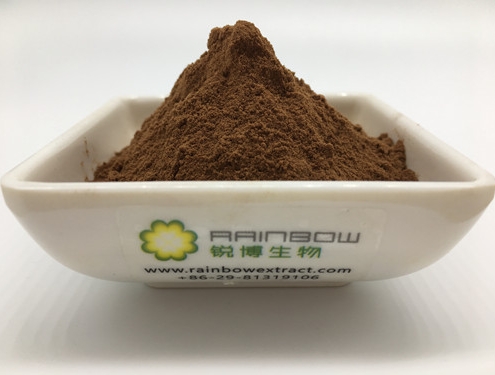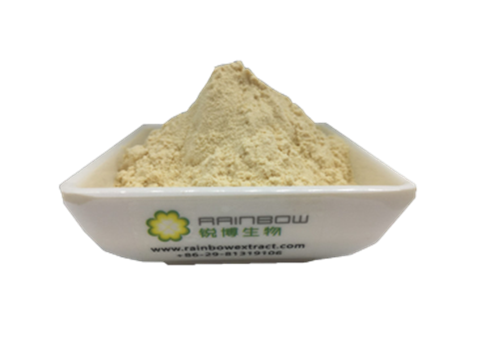Cistanche is the fleshy stem with dry scaly leaves of the perennial parasitic plant cistanche, which is believed to have the functions of tonifying the kidney, invigorating qi, moistening the bowel and defecating in traditional Chinese medicine. Modern pharmacological studies have found that the extract of cistanche contains a variety of compounds, such as polysaccharides, phenylethanolsides, iridoids, lignans, alkaloids, volatile components, etc. These compounds have been proven to improve sexual function, regulate neuroendocrine, improve the body’s immune function, antioxidant, promote substance metabolism, anti-Alzheimer’s disease, anti-Parkinson’s disease, senile constipation and female infertility, chronic renal disease and other functions.
Among the various components of Cistanche tubulosa extract, the phenylethanoid glycosides (PhGs) have garnered the most attention for their various pharmacological and toxicological properties. PhGs is the main active component of cistanche, namely the total glycoside. It is a kind of compound extracted from cistanche consisting of caffeic acid, glycogroup and phenylglycolin, including echinacoside and Acteoside. They are widely distributed in many plants and are known for their antioxidant and anti-inflammatory activities. These compounds have been found to exhibit a variety of anti-inflammatory and antioxidant properties, and are thus considered to be important therapeutic agents in the prevention and treatment of various diseases. They have been shown to have anti-aging, anti-fatigue, cardioprotective and neuroprotective properties. Currently, the glycosides of Cistanche are widely used for various medicinal purposes.
Echinacoside

Echinacoside
One of the components isolated from Cistanche is called echinacoside, is a bioactive phenolic compound that is widely used in medicinal plant species. It is the major phenolic component in the roots of Echinacea angustifolia, with the active component caffeic acid-linked trisaccharide. It is an antioxidant that inhibits lipid peroxidation, oxidative DNA damage, and the formation of lipid peroxides. It also has anti-inflammatory and anti-tumor activity. This substance reduces the levels of T-tau, which is implicated in Alzheimer’s disease. In addition, it promotes longevity in the model organism Caenorhabditis elegans.
Echinacosides have been isolated from various parts of the plant. They show analgesic, antioxidant, anti-tumor, anti-hepatic, anti-inflammatory, anti-spasmodic, anti-senile, anti-arthritic, anti-hyperglycemic, and hypolipidemic effects. They have also been reported to have hepatoprotective and immunomodulatory effects.
Several pharmacological activities have been investigated for echinacoside, include neuroprotective, anti-aging, cardiac and vaso-relaxing activities. It has been discovered to be a potent growth hormone activator in rat pituitary cells. It has been shown to stimulate cell proliferation, to inhibit apoptosis and to enhance the antioxidant status of mitochondria. It has also been shown to be effective in treating hyperlipidemia. It was also found that echinacoside is a vaso-relaxing compound that is capable of regulating reactive oxygen species.
Acteoside
Acetonide, also known as Verbascoside, is a type of water-soluble phenylethanoid glycoside compound that exists in cistanche tubulosa extracts and other plants. Acycoside has many physiological functions such as anti-oxidation, anti-inflammation, neuroprotection, immune regulation, anti-tumor and wound healing. Another component isolated from Cistanche is called acteoside. It is a strong antioxidant, which also inhibits the activity of NF-kB p52 subunit. In addition, it decreases the ratio of Bax to Bcl-2. It also promotes the scavenging activity of ROS.
Benefits of Cistanche glycosides
Cardioprotective and neuroprotective effects
The pathogenesis of central neurodegenerative diseases is complex, and the theory of free radical and apoptosis is the accepted theory of aging. Total glycosides of cistanche are believed to promote the proliferation of neural stem cells. In mice, it was found that it could increase the number of normal vertebral cells and the number of synaptic dendritic spines in hippocampus CA1 region of mice. The total glycosides of cistanche deserticola can also reduce the content of malondialdehyde in brain tissue, increase the activities of superoxide dismutase and glutathione peroxidase, protect cells from damage, inhibit the number of dopamine neurons in the substantia nigra and enhance the activity of free radical scavenging enzyme.
A more granular study investigated the role of phenylethanoid based polysaccharides in the gut microbiome. A comparison study was conducted between a control group and a model fetus to examine the effects of this novel nanomaterial on the microbiome. In particular, it was found that the phenylethanol based polysaccharides could inhibit the apoptotic activities of HepG2 cells in vivo. Moreover, echinacoside inhibited caspase-3 activation in response to rotenone exposure. In addition, it reduced TNF-a-induced cytotoxicity in L929 cells.
Anti-aging and anti-fatigue effects
Cistanche iridoids offer good anti-oxidant and anti-bacterial activities. These compounds also have anti-hepatic fibrosis effects. In addition, they promote youthful growth hormone (GH) levels.
Recent studies suggest that aging is closely related to lipid peroxidation of biofilm caused by free radicals. Phenylethanolsides contain multiple phenolic hydroxyl groups which can bind free radicals in the body, inhibit the activity of superoxide dismutase in serum and brain, and reduce the accumulation of free radicals in the body. Further results showed that total phenylethanosides could delay the aging of aging mice by regulating the balance of oxidation/antioxidant function in aging mice, which was speculated to be related to the protective effect of SOD and the antioxidant effect of lipid.
Good for liver
Hepatic fibrosis is a process of damage and repair after repeated or chronic damage to the liver. Most liver diseases develop into advanced cirrhosis through hepatic fibrosis.It also inhibited hepatic stellate cell activation. Moreover, echinacoside suppressed inflammatory cytokines in the plasma of lipopolysaccharide-induced acute liver injury. It also decreased the inflammatory markers D-galactosamine/ lipopolysa and IL-1b. Its mechanism may be correlated with zinc fingers and homeoboxes 3 (ZHX3) expression.



